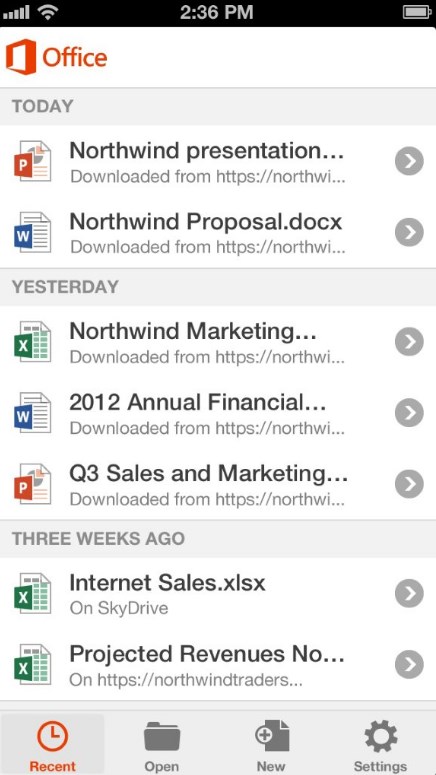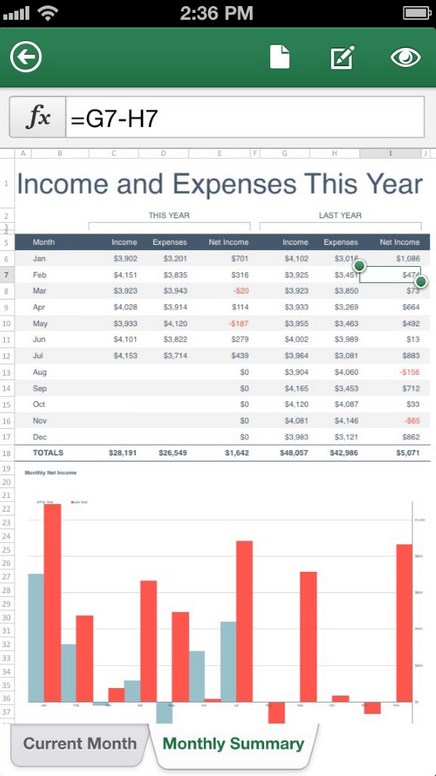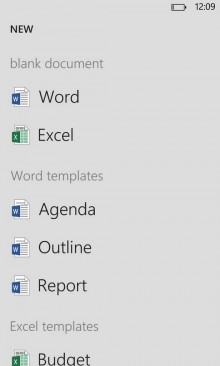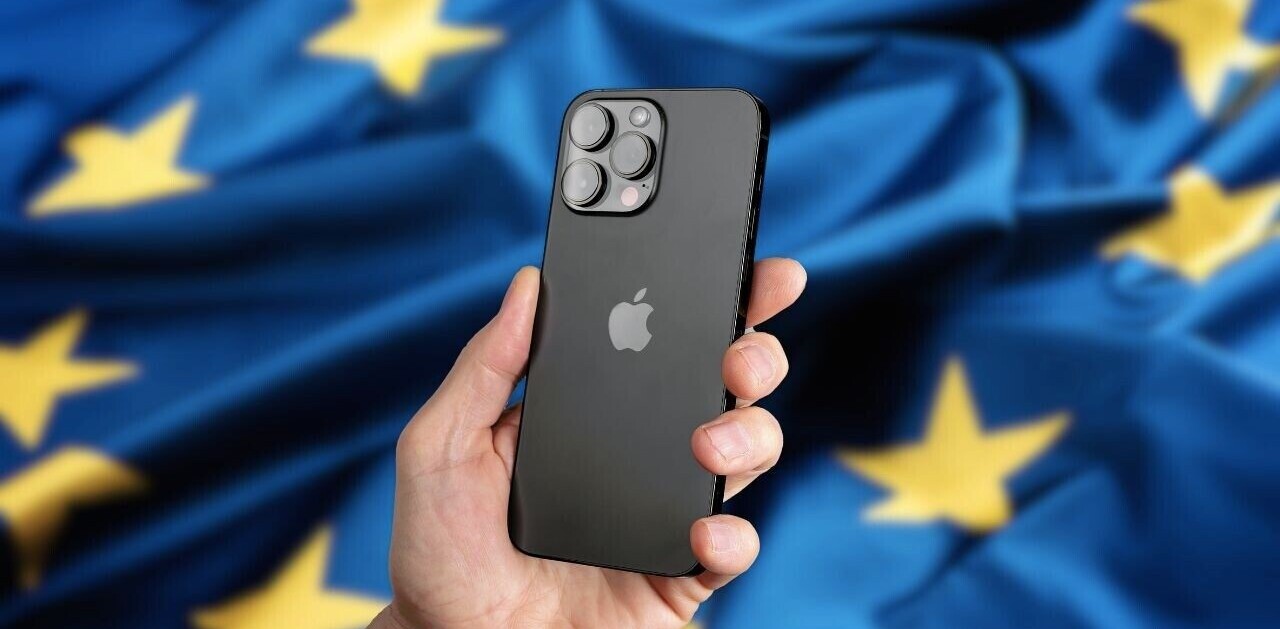
Today Microsoft released Office for iPhone. The Microsoft productivity suite has walked a long road to Apple’s iPhone, and its arrival will surely delight some while bedeviling those who are not able to access it.
Office for iPhone, what Microsoft calls “Office Mobile for Office 365 subscribers,” will be available only to current, paying Office 365 customers. If you purchased the most recent Office suite for desktop as a standalone product, you will not have access to the iPhone version of the software.
If you are familiar with Office for Windows Phone, you should already understand what Microsoft has built for the iPhone, as the two share a wide swath of functionality. You can edit (to an extent) Word, Excel, and PowerPoint files as part of the iPhone version of Office. You can also load and render larger sets of file types, however, these are not editable.
Microsoft waited quite some time to take Office to iPhone. Why did it do so? Office’s existence on Windows Phone has thus far provided Microsoft with a material advantage, especially among enterprise customers. And, quite frankly, Microsoft waited until Office 365, the virtual keys to the suite, had finally rolled out to each segment Office’s user base: consumers, students, and businesspeople.
This post will provide an overview of the software based on our testing and conversations with Microsoft, and will then discuss the software’s strategic relevance.
Functionality
As noted before, Office for iPhone has a somewhat limited functionality, but this is because it’s tailored to a small screen, and intended for on-the-go use. That is to say, the iPhone’s Office build in no way resembles the desktop or Web versions of Office – be that the 2007, 2010, or 2013 versions. It does, however, present a set of capabilities that someone on a bus or plane might wish to use.
These capabilities may or may not be sufficient – the right feature mix will ultimately be up to the individual consumer.
Let’s go through Office for iPhone’s three key function verticals to better gist what Microsoft has released today.

With Office for iPhone, you can create and edit Word files. All of the files that you currently have on SkyDrive are automatically propagated into the application. I had a slurry of old college essays and a very terrible short story that I wrote on a plane with a woman I once dated in college. Needless to say, mobile editing could not salvage our relationship.
When you open a Word document via SkyDrive, it will load to the exact spot where you last edited it. Thus, if you work on a document on your Windows 8 machine, save to SkyDrive, and then load it on Office for iPhone, it will immediately direct you to where you left off. A minor feature, but one that could be convenient.

What can you do inside of Word? Format, read, comment, save, and view a document in outline mode. As stated before, it’s a constrained feature set. That said, Microsoft has created a user interface that is dead simple, and leaves absolutely nothing to be confused about. This is to their credit; the app is lightweight, and its mobile-only use case demands that. For this reason, could be described as well-designed.
PowerPoint files can be viewed, and modified slightly. You can move hide and move slides around, edit text, and amend notes. Again, a concise feature set, designed around what you might need to do in the back of an Uber or Lyft on the way to a meeting.

The key question here is whether Microsoft has hit the right balance between a clean user interface and limited functionality. From the company that gave us both Office 2003 and 2013, I’m inclined to say that the reductionist approach is actually a plus; the company can always add in a few demanded features, but it’s far harder to declutter a busy interface.
Excel documents can be created from scratch using Office for iPhone, but as with Word, what you can build is limited. You can add comments, create graphs and other charts, tab through document pages, and make formatting changes.

Like those of its sister programs, the feature set in Excel is designed, more for tinkering and correction than for creation. You could build a spreadsheet from scratch on your iPhone if you really wanted to, but I doubt you have the patience. Most of us barely have the mental grit to grind one out on our desktop machines; to do it on a small screen is all but unthinkable.
What else can you do? Open files and look at them. But not .ODF files, or Office documents from Office 2003 or before. Old Office files are verboten.
Its Windows Phone Twin
You could be forgiven for thinking that Office for iPhone is a simple port of Office for Windows Phone. Yet the two are different in a single, key way: iPhone’s Office isn’t free. You must be an Office 365 subscriber to use it. Office for Windows Phone is free and comes with every Windows Phone.
That difference aside, let’s take a quick screenshot travail through Windows Phone’s version of Office. It’ll look similar. These are images taken from a Lumia 928 that is currently hanging out at my apartment:




In Context
Now that you are up to speed on what Office for iPhone is, let’s ask ourselves, what does the package mean for Microsoft?
Call it an underscoring of Microsoft’s recent push towards services, rather than stand-alone software sales. The individuals and companies that are already Office 365 subscribers just picked up some neat new functionality for free.
This provides Microsoft with another selling point for its Office as a Service product. However, what are we to make of folks who have an iPhone but are still use an older version of Office? Well, for that subset, it’s time to evolve, or be a bit stuck – and by stuck I mean use something that isn’t Office.
You can sign up for Office 365 from directly inside of the application. Apple will get a 30% cut of that fee. This much I was able to confirm, but not if Apple will receive a continuing 30% slice of Office 365 revenues for customers that sign up through the application. The dollar amount isn’t small when you consider that Office 365 for consumers costs $100 per year. 30% of that sum adds up over time.
You will certainly recall the epic hufflepuff over the Office fees before. A short excerpt:
A disagreement over subscription fees in the iOS App Store has Microsoft and Apple snipping at each other behind closed doors, and, increasingly, on the pages of the technology press.
What was initially thought to be a disagreement over SkyDrive, Microsoft consumer cloud storage product, has become known as a more existential disagreement over a much more core Microsoft product: Office. Office 365, to be precise, the firm’s cloud-powered version of the Office brand.
Today we enjoy some sort of denouement, or – and this word is a bit sharp – capitulation.
Still, Office 365 isn’t new, and neither is the iPhone. Why now and not before?
It could be something as simple as a product timeline: the Office team has been busy during the past year, to put it in a small voice, perhaps they are not just ready.
That said, there have been competitive advantages for Microsoft keeping Office off the iPhone. It provided an advantage to Windows Phone devices, and the first lives of Windows 8 on tablet devices. Enterprise firms that are dependent on the suite had to choose a platform that supported it, and those that did were core to Microsoft’s launch of both Windows Phone 8 and Windows 8.
Finally, Office 365 for the consumer demographic is new. Yes, it now has more than 1 million subscribers, but nascent it remains. Now that governments, students, companies, and individuals can purchase Office 365, Microsoft can offer Office for iPhone sans excluding anyone.
Or put with a touch more brevity, Microsoft is now in a position to offer the product to its full audience, and post the moment it afforded its new platforms a free win.
Office 365, along with Azure, represent two of Microsoft’s key long-term service products that have the potential to drive revenue growth for the company in the next 5 and 10 years. This release lays it bare: Office in a Box is over. Welcome to Microsoft’s future.
Top Image Credit: Getty Images
Get the TNW newsletter
Get the most important tech news in your inbox each week.





